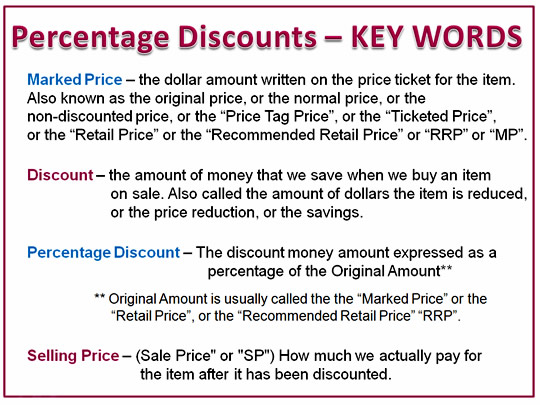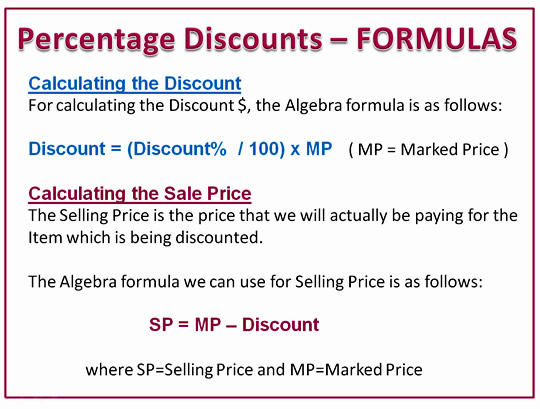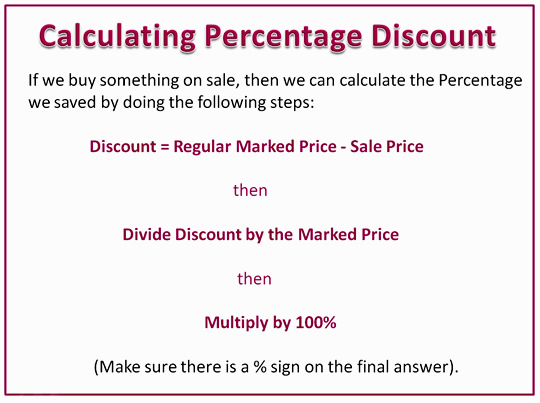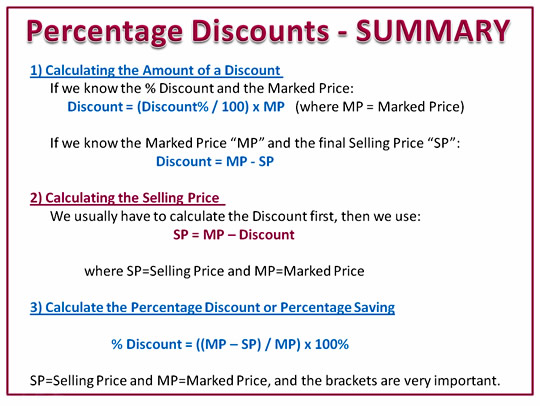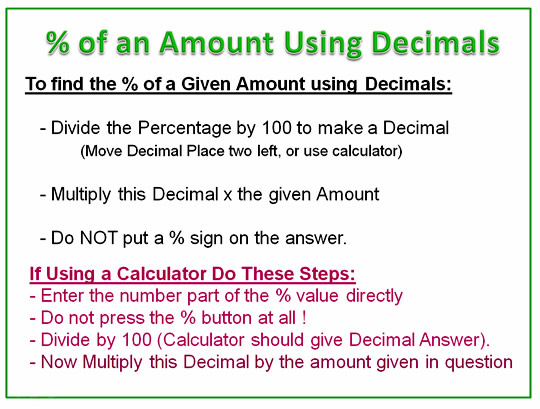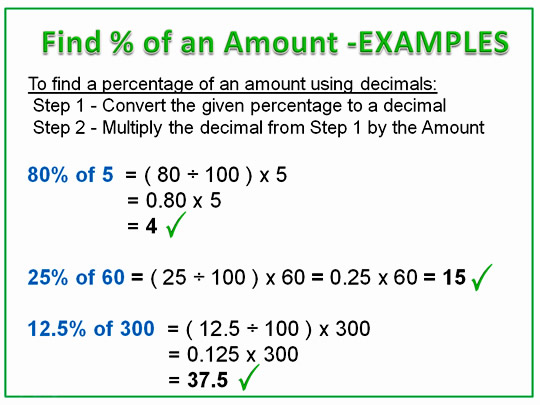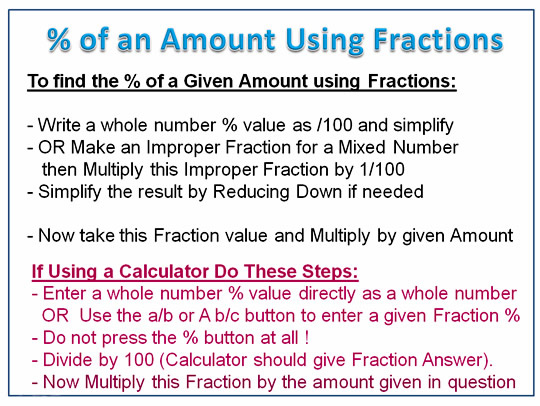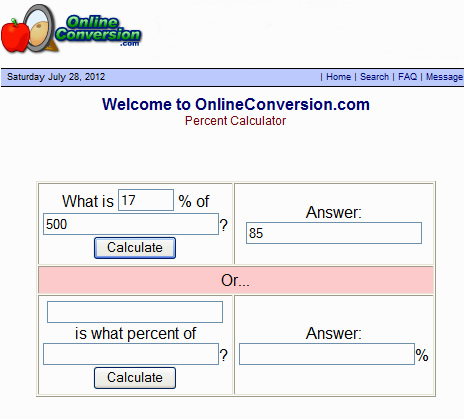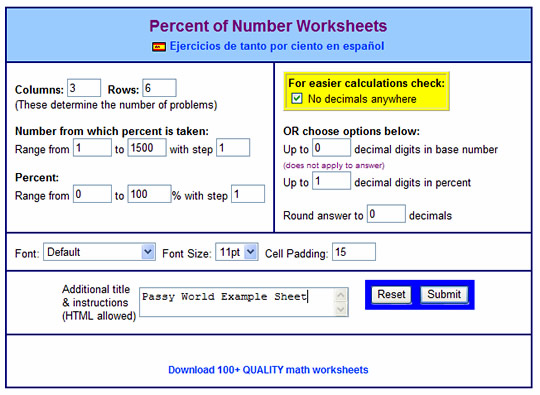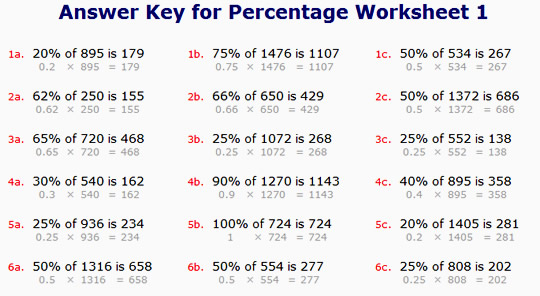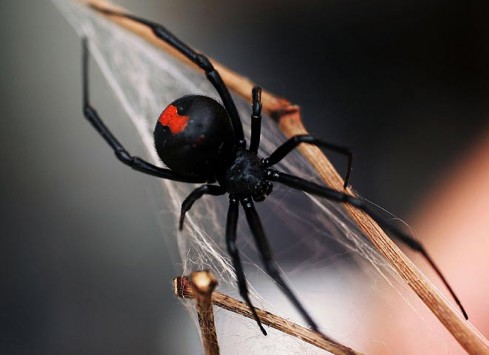There are mathematical equations for just about everything these days: there is even mathematics for carrying cups of coffee!
A mathematical study has revealed that people walking with full cups of coffee will most often spill them at some point between the seventh and tenth step.
It just so happens that the human stride has almost the perfect frequency to drive the natural oscillations of coffee, when the fluid is in a typically sized coffee mug.
Two engineers, Rouslan Krechetnikov and Hans Mayer, set up an experiment: they asked people to walk at different speeds along a straight path with a filled coffee mug in hand.
The volunteers did this in one of two ways:
1) Focusing on the coffee mug and
2) Looking straight ahead.
A camera recorded each person’s motion and the mug’s trajectory, while a tiny sensor on the mug recorded the instant of spillage.
A fluid’s back-and-forth movement has a certain natural frequency, and this is determined by the size of its container. In their paper published last week in Physical Review E, Krechetnikov and Mayer show that everyday mug sizes produce natural frequencies that just happen to match those of a person’s leg movements during walking. This means that walking alone, without any other interference, is tuned to drive coffee to oscillate in a mug. But the researchers also found that even small irregularities in a person’s walking are important: These amplify the wilder oscillations, or sloshing, which bumps up the chance of a spillage.
The following video form ABC Catalyst summarises this experiment.
Watch it online at the following link:
http://www.abc.net.au/catalyst/stories/3568949.htm
Preventing Spillage
The researchers found that when study participants focused on their cups, the average number of steps they took before spilling coffee increased greatly.
Krechetnikov and his graduate student Hans Mayer, the primary author of the study, suggested two explanations for this result.
First, focusing on one’s cup tends to result in slower walking, and second, it dampens the noise, or chaotic sloshing, in the cup.
Secondly, a focused carry decreases the amount of noise because we perform “targeted suppression”, automatically counteracting the sloshing of the liquid with small flicks of our wrists, or because we simply hold the cup more steadily when we’re looking at it, the researchers could not say.
Third, accelerate gradually. If you take off suddenly, a huge coffee wave will build up almost instantly, and it will crash over the rim after just a few steps.
Concluding their study, the two engineers had some advice for coffee drinkers. They said leaving a large gap between the coffee and the top of the drinking vessel, and walking slower, prevents spillages.
They added that watching the mug, rather than the floor, while carrying it proved to be a more effective coffee-holding method.
So to prevent coffee spills do these three things:
a) Slow down
b) Watch your coffee, not what’s ahead of you
c) Don’t fill your cup too high
In regard to c), “too high” actually has a mathematical formula: keep your coffee level at least one-eighth of the cup’s rim diameter from the top and you will never spill your coffee!
Liquid Sloshing Dynamics
Image Source: http://www.ascience.com
The area of Science, Engineering, and Mathematics which studies the back and forth movement of liquides is called: “Liquid Sloshing Dynamics”.
Liquid Sloshing engineering studies, were first done to stabilize fuel tanks inside missiles, rockets, and satellites.
Quite complicated Mathematics and Equations are used in these studies.
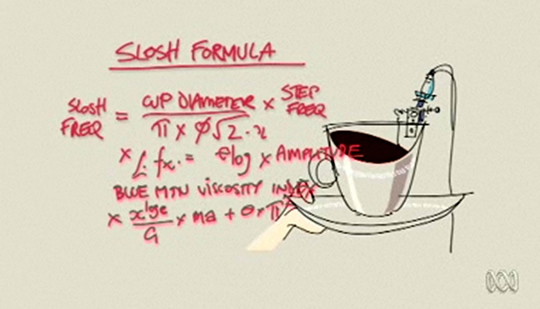
Image Source: Slosh Formulas from ABC Catalyst Video
The mathematical equations have been programmed into computers to creates sloshing simulators.
Image Source: http://www.ascience.com
For more details about sloshing simulation, go to the followining link:
http://www.ascience.com/03152006Slosh.htm
The problem of liquid sloshing in moving or stationary containers is an onging concern for aerospace, civil, and nuclear engineers; mathematicians, physicists and designers of road and ship tankers.
Engineers already know of slosh-control techniques: Tanker trucks contain inner ridges, or baffles, to damp the liquid’s motion, because too much sloshing can make a truck overturn.

Image Source: http://wordpress.com
Preventing Sloshing in Tanker Trucks

Image Source: http://www.rapidspray.com.au
An Australian company specialising in Slosh Engineering is “Rapid Spray. The photo above shows them testing slosh on Water and Weed Spraying Tanks.
Rather than building fence type ridges inside the truck tank, Rapid Spray obtain stability by filling the tank with hollow “Baffle Balls”.
These balls slow down the movement of liquid in the tank, and stop large sloshing which could tip the truck over.

Image Source: http://www.rapidspray.com.au
The more traditional method of stopping excessive sloshing in tankers, involve placing baffle dividers in the tanker as shown in the following diagram.

Image Source: http://www.nomenclaturo.com
Note that there is also considerable mathematics and engineering involved with the braking systems of tanker trucks.
As the tankers drop off loads and become less full, the brakes need to mathematically adjust for the lighter load, so that they do not come on full load force and lock up the wheels and skid the tyres.
Roller Hockey Application

Image Source: http://www.roller-hockey.co.uk
According to Wikipeadia, the effect of slosh is used to limit the bounce of a roller hockey ball.
Water slosh can significantly reduce the rebound height of a ball, making it stay low and behave more like a hockey puc than a ball.
Many of the balls for roller hockey commonly contain water to reduce their bounce height.
Related Items
AFL Ground Sizes
AFL Football GPS
AFL Football Statistics
Drag Racing Integers
eBay Math Problem
Interesting Circles
Interesting Percentages
Jobs that use Geometry
Mathematics in Computer Games Programming
Mathematics of Aircraft and Train Disasters
Math in Music – Fibonacci Sequence
My Virtual Home – Area and Perimeter
Off Road Motorcycling Algebra and Statistics
Olivers Hill Giant Retaining Wall Collapses
Olympic Games Mathematics
Real World Integers
Real World Straight Line Graphs I
Real World Straight Line Graphs II
Real World Charts and Graphs
Real World Mathematics Formulas and Equations
Real World Venn Diagrams
Tall Buildings
Tsunami Mathematics
Weight Training and Percentages
If you enjoyed this post, why not get a free subscription to our website.
You can then receive notifications of new pages directly to your email address.
Go to the subscribe area on the right hand sidebar, fill in your email address and then click the “Subscribe” button.
To find out exactly how free subscription works, click the following link:
If you would like to submit an idea for an article, or be a guest writer on our blog, then please email us at the hotmail address shown in the right hand side bar of this page.
Feel free to link to any of our Lessons, share them on social networking sites, or use them on Learning Management Systems in Schools.
Enjoy,
Passy



